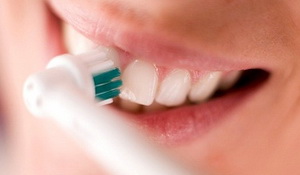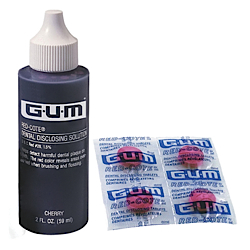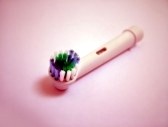An electric toothbrush is a toothbrush usually powered by a battery to move the brush head. Electric toothbrushes can be battery-operated or rechargeable, and can be of rotary or sonic movements. Most powered toothbrush manufacturers do not recommend a specific brushing method; however, the electric brushes should be used in a specified manner.
Do I need an electric toothbrush?
Choosing a toothbrush is a personal choice. Some may prefer to use an electric one while another might be more comfortable with a regular toothbrush. Recent research has mentioned that if you clean your teeth efficiently, it will not matter what type of toothbrush you use.
However these toothbrushes are especially recommended for individuals who require a larger handle, because powered models are easier to grasp. Electric toothbrushes can be beneficial for:
- parental brushing of children’s teeth;
- for children and adults who are physically handicapped, mentally retarded, aged, arthritic, or otherwise with poor dexterity; and
- for those individuals who are poorly motivated in keeping their oral hygiene.
How to use an electric toothbrush to brush teeth
Instructions for brushes with a sweeping and /or oscillating rotary motion are as follows:
1. The electric toothbrush is positioned on the tooth surfaces in a 45- or 90-degree angle to the tip of the tooth. Only when positioned should the brush be switched to “on.” The mouth should be almost closed.
2. The brush should be moved slowly over and around each tooth for 3 to 5 seconds, making sure that the bristles clean the areas between the teeth.
3. The brush head can be lifted back and forth into the areas between teeth to reach the area between teeth and the gumline; the brush always remains on a single tooth.
4. After a period of approximately 5 seconds, the brush is moved to the next tooth surface and repositioned.
5. Experienced individuals can use the brush also in a perpendicular angle to the teeth and gums, but the applied force has to be gentle. In this way, each tooth in the upper and lower arch is cleaned on the outer and inner surfaces of the teeth.
6. It is best to divide the mouth into four quadrants (upper-right, upper-left, lower-right, and lower-left) and to start brushing on a tooth in the upper rear and then clean one surface after the other very systematically.
7. It is an easy way, gives good control for the individual, and does not omit any tooth surface. This method takes more time, because at a single time interval, only one tooth surface can be cleaned.
How long do I need to brush?
It is commonly recommended to brush for 2 to 3 minutes with around 30 seconds for each quadrant in the mouth. Often a compromise is made by suggesting 5 to 10 strokes in each area or by advocating the use of a timer. Many modern electric toothbrushes have a timer which briefly interrupts power or buzzes, typically after two minutes, and sometimes every 30 seconds.
How to evaluate my toothbrushing?
Whatever toothbrushing techniques are recommended, the main purpose of tooth brushing is to remove dental plaque from the teeth, including the gumline, with the minimum amount of damage to the teeth and surrounding structures. Disclosing agents provide the means of evaluating the thoroughness of cleaning the teeth and should be available in the dental office. The most widely marketed red disclosing products contain FD&C Red #28.
Disclosing agents may be in either a liquid or tablet form. The disclosing chewable tablet or the liquid should be swished around in the mouth for 15 to 30 seconds and then spat out. Home use of disclosing agents should be encouraged to permit self-evaluation of the effectiveness of plaque-control programs. Clinical assessments will be made by your dental professional for evidence of improper tooth brushing. Minor damage that may be noted includes abrasion to the soft tissues (scuffing, bruising, and punctate lesions) or damage to the tooth surface.
When do I need to replace electric toothbrushes?
Most manufacturers, as well as dental professionals, recommend that electric toothbrush heads be changed every three to six months at minimum, or as soon as the brush head has visibly deteriorated. The heads of most powered or mechanical toothbrushes are smaller than manual toothbrushes and are usually removable to allow for replacement.
If toothbrushes need to be replaced more frequently than every three months, your tooth brushing technique should be checked. Even if the brushing technique is acceptable or has been corrected, toothbrushes should still be replaced frequently. It should be noted that it is necessary that individuals be made aware of the importance of having a new toothbrush after every contagious medical illness or mouth infections.




